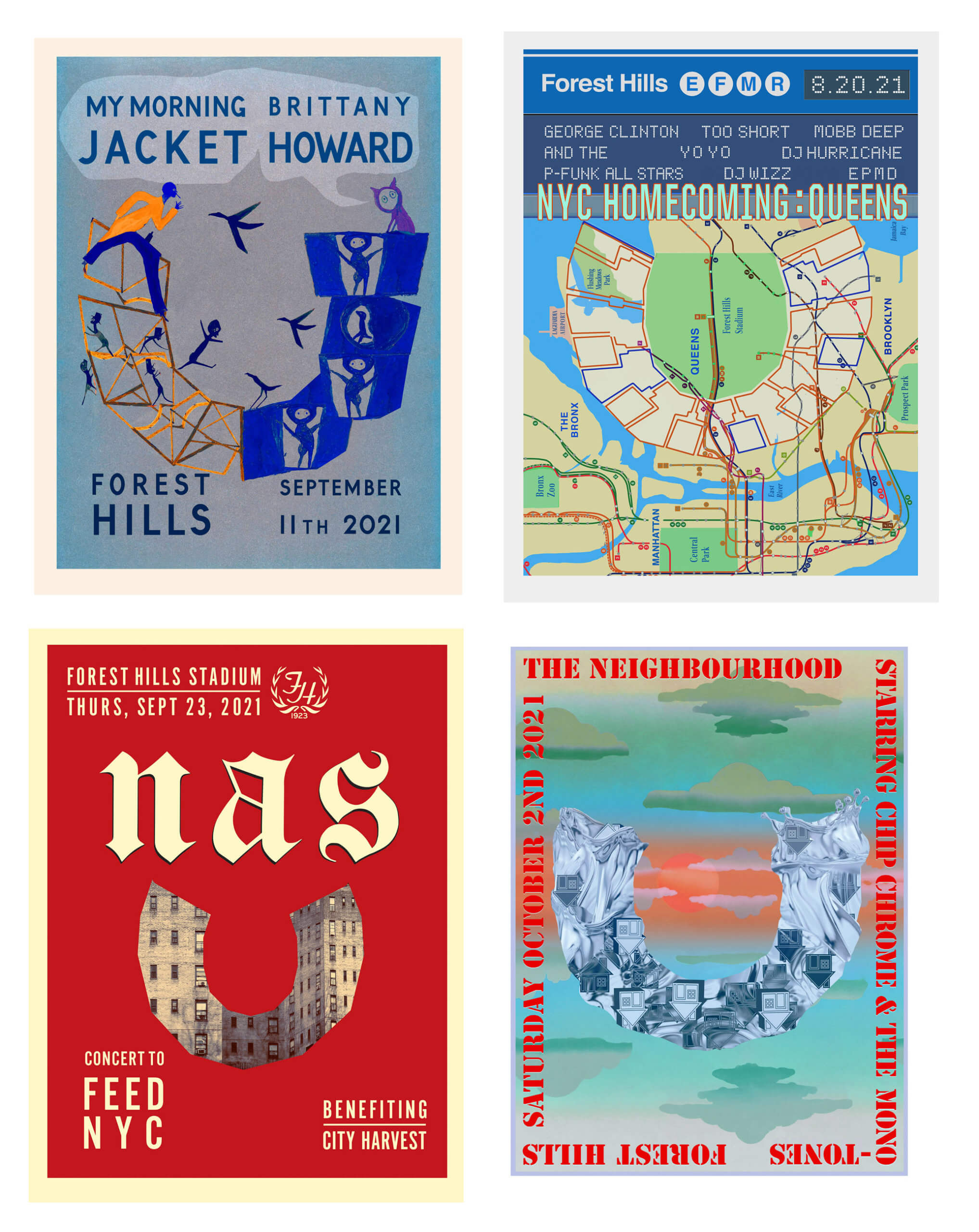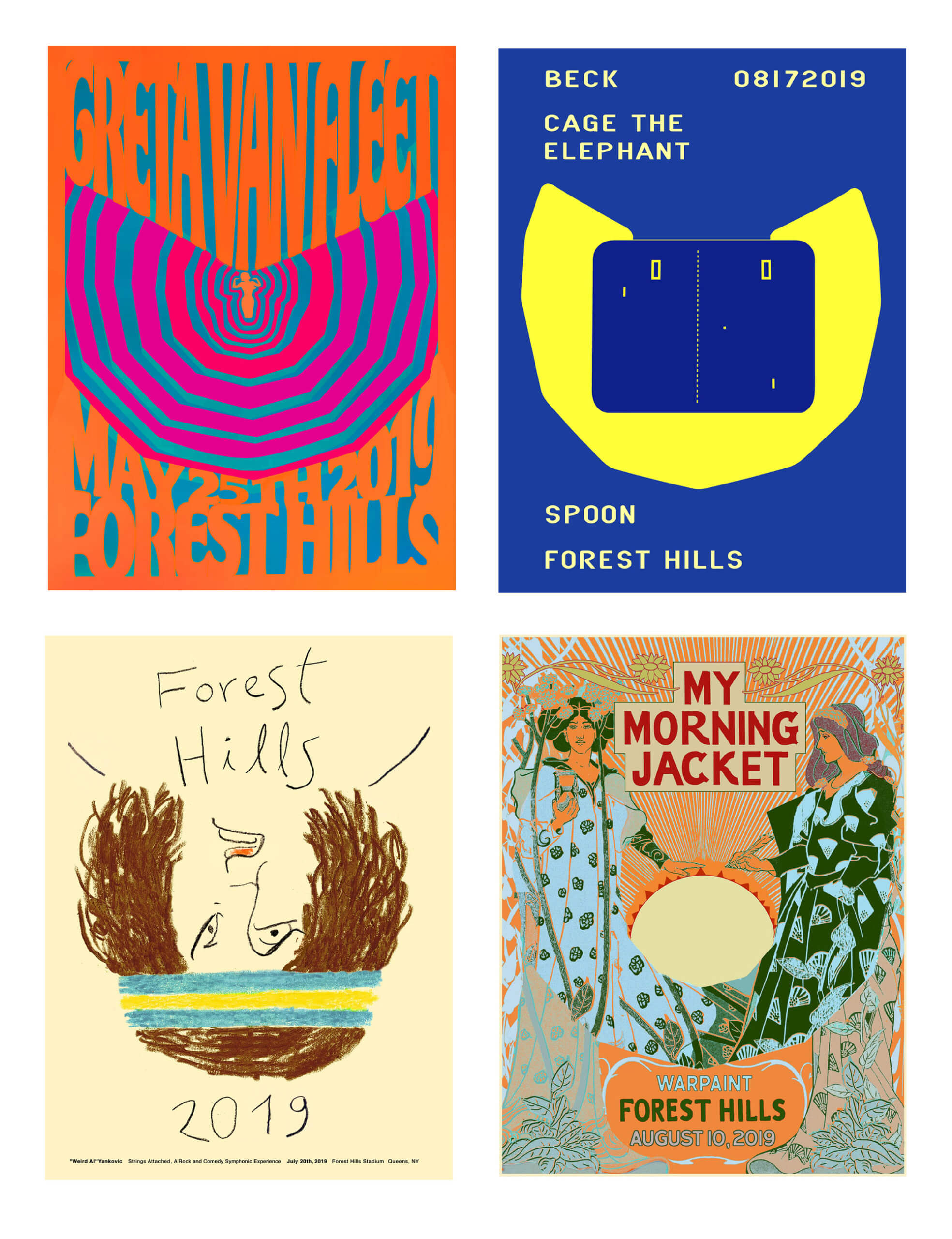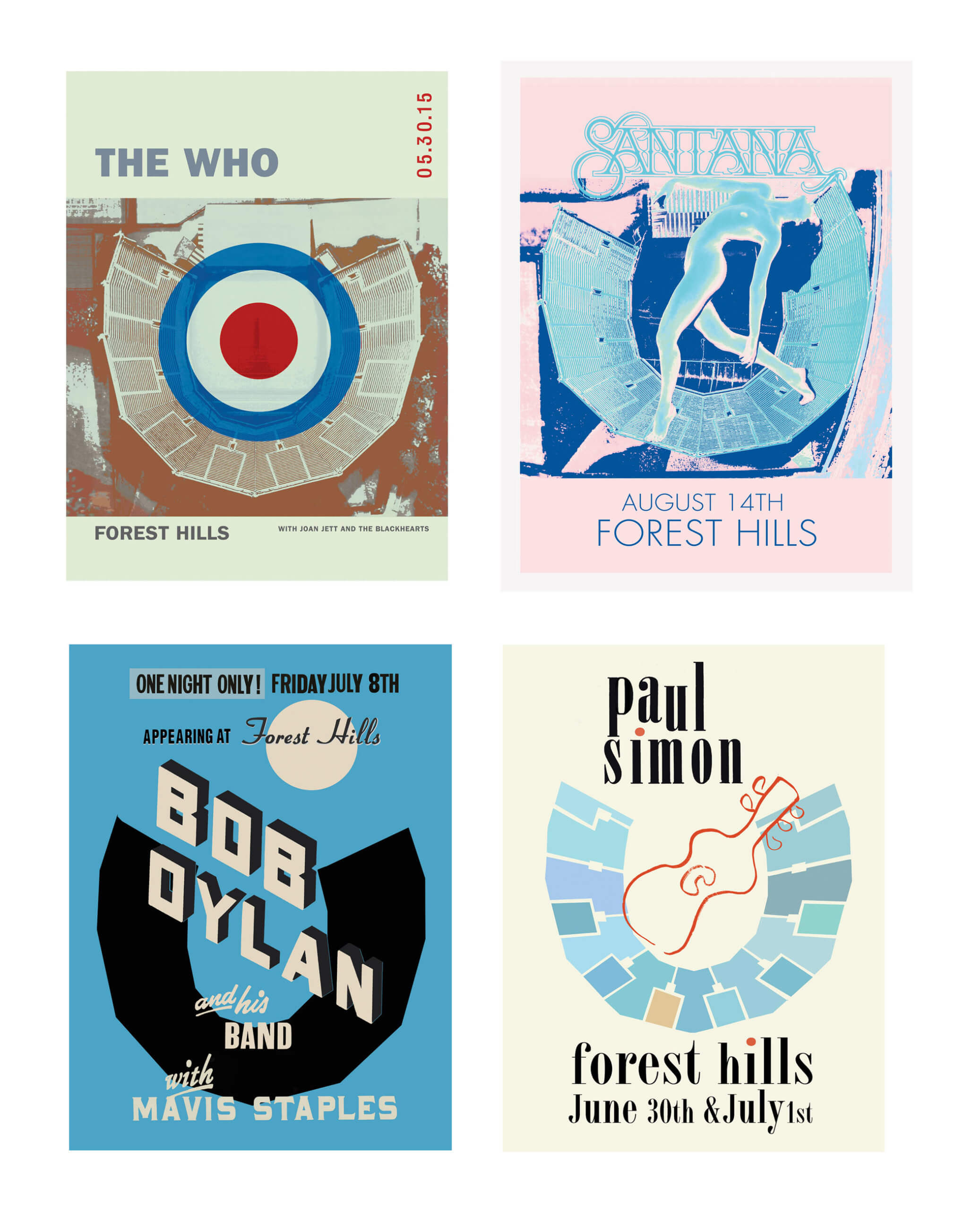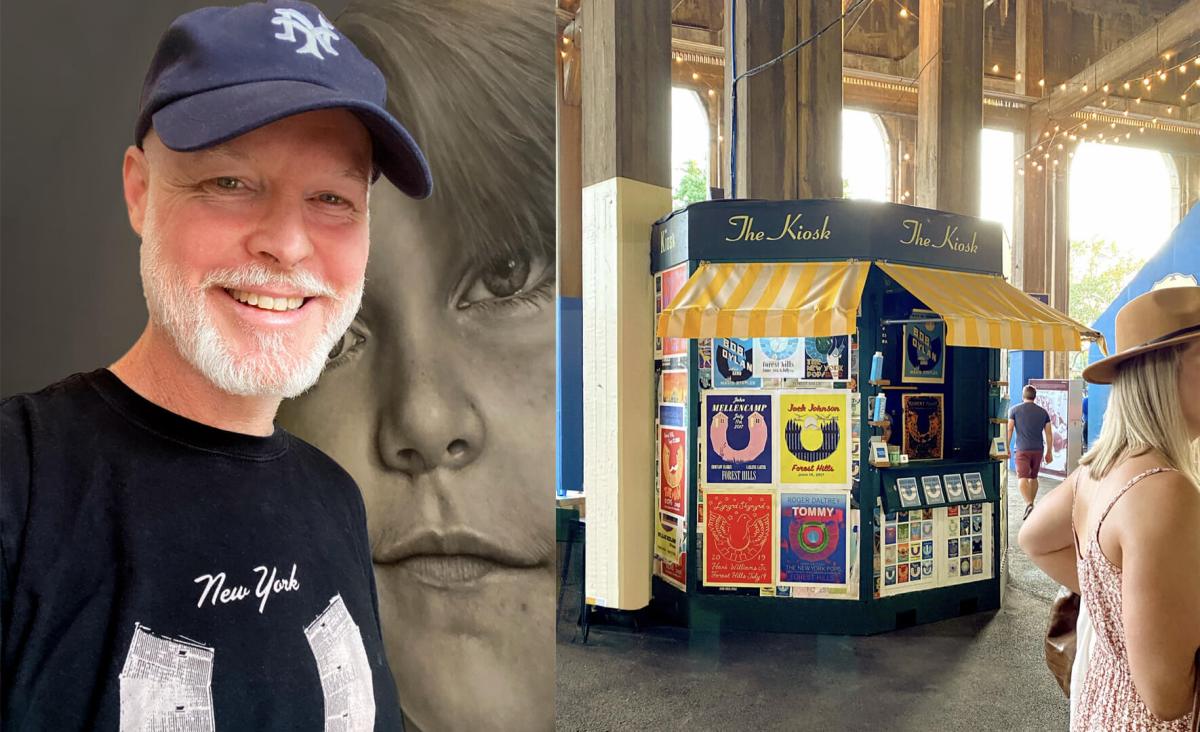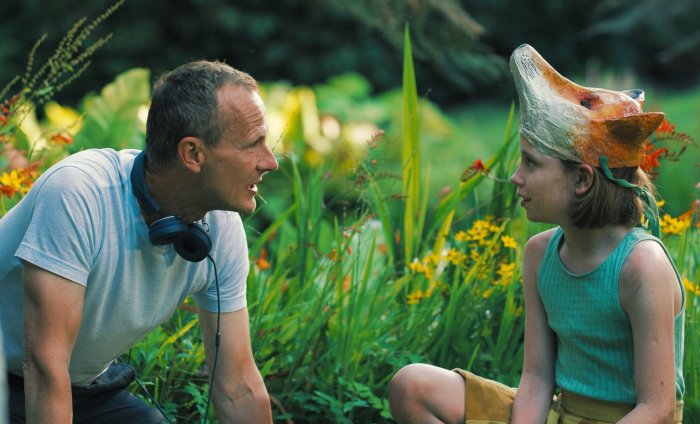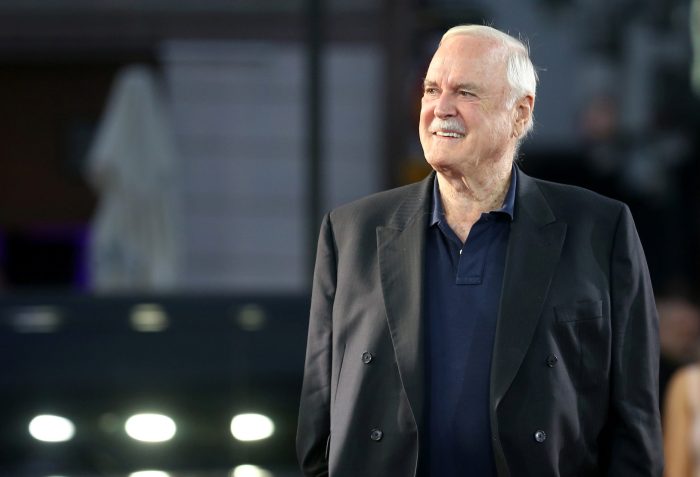Forest Hills Stadium located in Queens, New York is an iconic outdoor music venue with a tennis court in the middle. For the city, it has become a one-of-a-kind musical amphitheater that holds more than 13,000 guests and has become famous for its great acoustics. It is a space where iconic artists like Dolly Parton, Bob Dylan, and Ed Sheeran can connect with their fans to perform songs from their latest albums.
Bill Sullivan is a painter and designer who was inspired by the long history of the stadium and its unique horseshoe structure design. And since 2015, he has created posters for each performing artist who has played at the stadium.
Before its most recent renovation, which began in 2013, it was primarily thought of as the home of the U.S Open tennis championships for more than 50 years. The venue, which sits on the grounds of The West Side Tennis Club started booking concerts in the 1960s with performers like Frank Sinatra, Barbra Streisand, and The Rolling Stones – serving both as the longtime home to the U.S Open and as a music venue. In the late 70s, the U.S Open left the courts, and slowly over time the venue became abandoned.
Decades later, Sullivan found inspiration in the club and the Stadium in creating a book called, “Forest Hills.”
“I created the book to recreate what the Stadium would have looked like in the 1900s when tennis was played there,” said Sullivan. “The reason why I was attracted to the site is that it seems to change within all the images I looked at. In the beginning, it had grass courts, with three courts – then it eventually changed to one clay court. It went from men playing in long tennis pants, to women wearing short dresses playing on clay courts. The book was an investigation of how the stadium continually changes through time. It was a real inspiration to have a place where I am able to remain in the same place but to have it continually changing through the years, so that is what inspired me when I started to do the concert posters to allow the space and the design to completely change with the identity of each artist that played there.”
In 2015 Mike Luba who has directed and overseen the rebirth of the stadium had seen Sullivan’s book contacted and asked Sullivan if he could create a poster program for the Stadium along the lines of the legendary one at Fillmore West that defined the iconic psychedelic concert poster scene of the late 60s and early 70s in San Francisco. The posters were the starting point for Sullivan’s work with the Stadium as he soon became the Creative Director of the site helping to define and design the look and feel of the stadium’s visual and physical identity, using the book as something of a design bible. So far he says It’s been an amazing experience and that he feels so lucky to be working with such a place where the people running it appreciate the unique history and historic importance of the place so deeply and are willing to do what it takes to keep that magic alive.
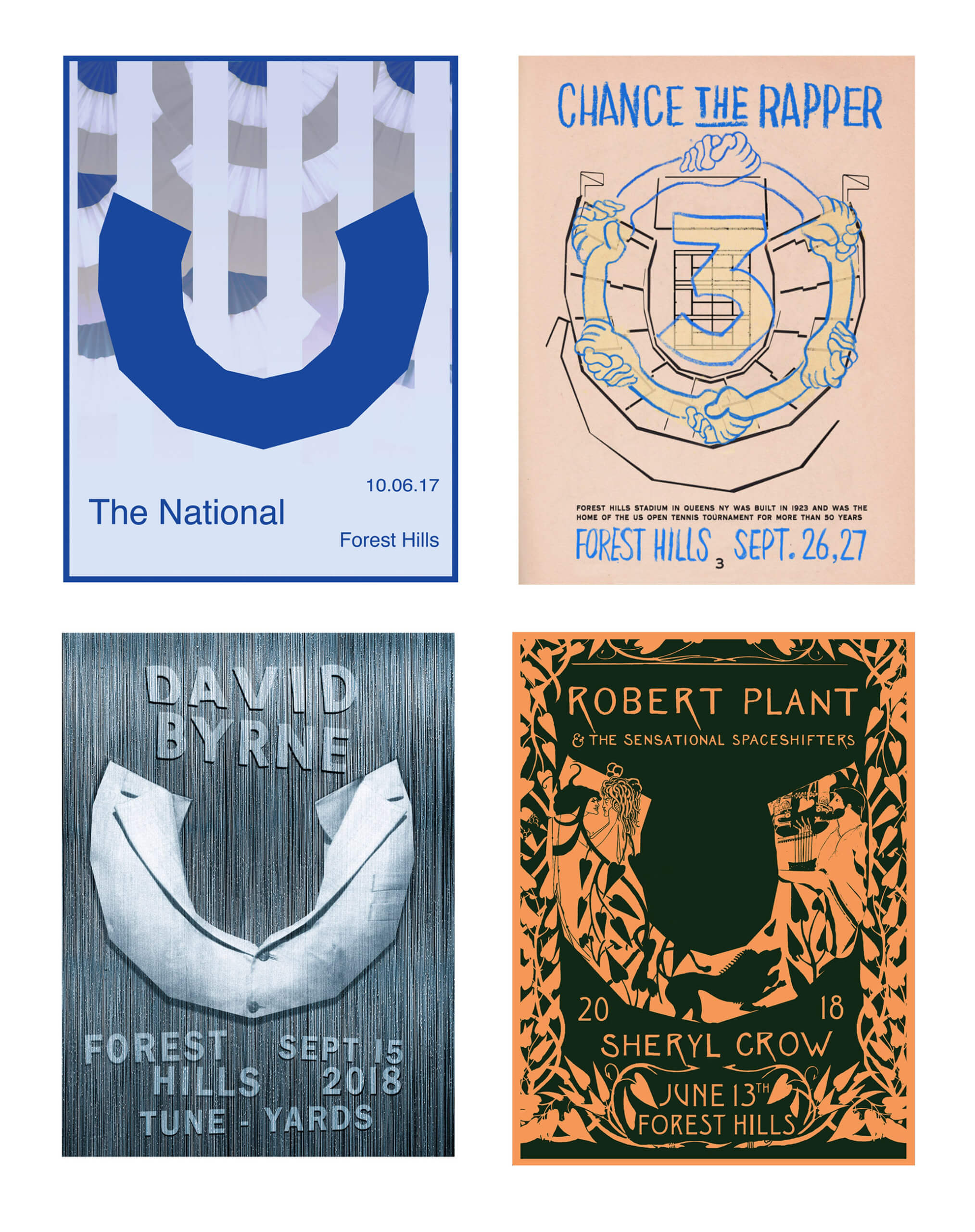
All of the posters that Sullivan has done have a design based on the horseshoe shape that represents the stadium and helps to define the artwork. When Ed Sheeran came to perform at the Forest Hill Stadium, Sullivan created a design of an orange center guitar with gray line silhouettes around it with a light green background in the shape of the horseshoe. On the top corner, it has an “X” which represents Sheeran’s second studio album, “X.” The poster captured who Ed Sheeran is as an artist and fans can easily recognize who the artist is without looking at the name.
From Arctic Monkeys to JoJo Siwa, Sullivan treats each poster and artist with the same amount of respect. The process of getting to the headspace of creating an authentic poster comes with extensive research and the approval of any of the artist’s fans that he can work with. Sullivan’s goal in creating these posters is to capture the authenticity and identity of the performer and he has been accomplishing his goal in over 75 posters since 2015.
“I begin each one by looking at all the posters that I can find of each band that had ever been made. Trying to find the best ones, I try to make them better than that. I have also worked as a portrait painter and my goal as a portrait painter is to figure out how the world can find this person interesting or attractive but their family can still recognize them. The process is similar because for each band I have to figure out how the world that may not know this band can find them interesting or attractive and still have their fans recognize them. I first go by trying to figure out a connection to the band into a larger type of aesthetic,” said Sullivan.
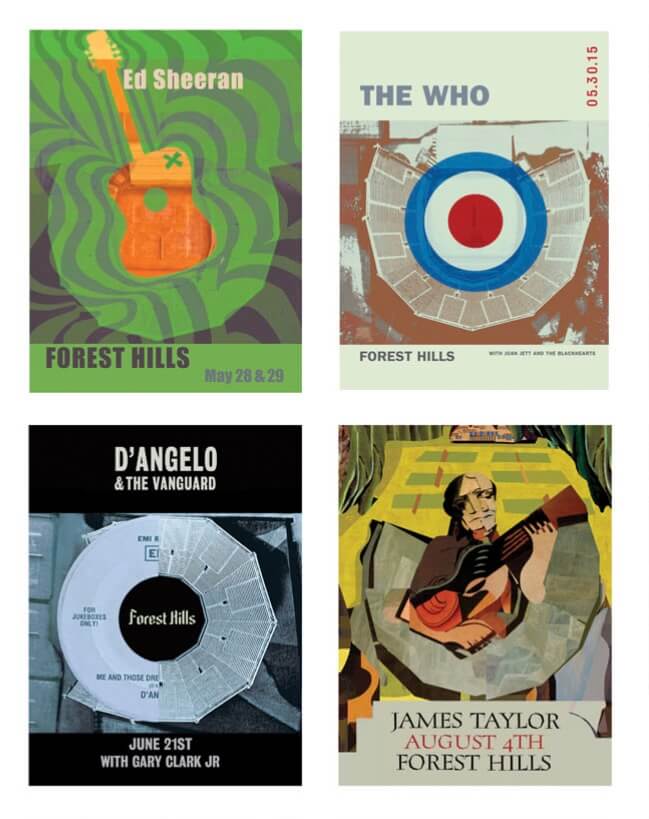
It is a two-man team with Sullivan being the artist and his son Oscar Sullivan selling his posters through the Kiosk shop. The Kiosk is a unique structure that Sullivan designed that is located underneath Forest Hill Stadium as well as online. It is modeled off of the old poster Kiosks in Europe and is covered with layers of his old and new posters.
“The Kiosk is a place where people come and are confronted with this evolving history and can hopefully have this new appreciation for this extraordinary place and for every band that has played there,” said Sullivan. “Now, we’re in the process of looking at the bands from the 1960s, 70s, 80s, and 90s, we keep a list of every band that has ever played the stadium. There are over 100 additional bands so in time the goal is to continue to do this horseshoe-based design poster for all the bands that have played Forest Hills Stadium since the beginning. It really is a magical place. And I just try to capture that magic in these portraits of all these different artists.”
For more updates follow The Kiosk Shop on Instagram @thekioskny.
